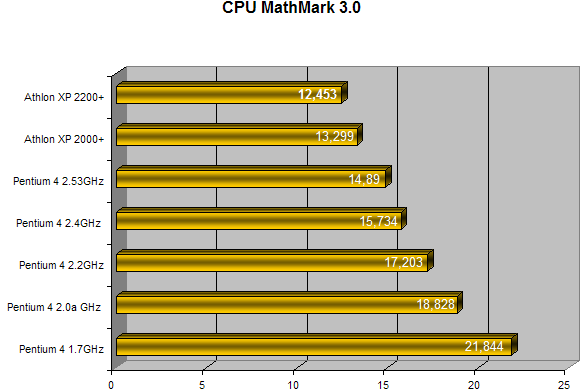
 |

|
| ActiveWin: Reviews | Active Network | New Reviews | Old Reviews | Interviews |Mailing List | Forums |
|
|
|
|
|
DirectX |
|
ActiveMac |
|
Downloads |
|
Forums |
|
Interviews |
|
News |
|
MS Games & Hardware |
|
Reviews |
|
Support Center |
|
Windows 2000 |
|
Windows Me |
|
Windows Server 2003 |
|
Windows Vista |
|
Windows XP |
|
|
|
|
|
|
|
News Centers |
|
Windows/Microsoft |
|
DVD |
|
Apple/Mac |
|
Xbox |
|
News Search |
|
|
|
|
|
|
|
ActiveXBox |
|
Xbox News |
|
Box Shots |
|
Inside The Xbox |
|
Released Titles |
|
Announced Titles |
|
Screenshots/Videos |
|
History Of The Xbox |
|
Links |
|
Forum |
|
FAQ |
|
|
|
|
|
|
|
Windows XP |
|
Introduction |
|
System Requirements |
|
Home Features |
|
Pro Features |
|
Upgrade Checklists |
|
History |
|
FAQ |
|
Links |
|
TopTechTips |
|
|
|
|
|
|
|
FAQ's |
|
Windows Vista |
|
Windows 98/98 SE |
|
Windows 2000 |
|
Windows Me |
|
Windows Server 2002 |
|
Windows "Whistler" XP |
|
Windows CE |
|
Internet Explorer 6 |
|
Internet Explorer 5 |
|
Xbox |
|
Xbox 360 |
|
DirectX |
|
DVD's |
|
|
|
|
|
|
|
TopTechTips |
|
Registry Tips |
|
Windows 95/98 |
|
Windows 2000 |
|
Internet Explorer 5 |
|
Program Tips |
|
Easter Eggs |
|
Hardware |
|
DVD |
|
|
|
|
|
|
|
ActiveDVD |
|
DVD News |
|
DVD Forum |
|
Glossary |
|
Tips |
|
Articles |
|
Reviews |
|
News Archive |
|
Links |
|
Drivers |
|
|
|
|
|
|
|
Latest Reviews |
|
Xbox/Games |
|
Fallout 3 |
|
|
|
Applications |
|
Windows Server 2008 R2 |
|
Windows 7 |
|
|
|
Hardware |
|
iPod Touch 32GB |
|
|
|
|
|
|
|
Latest Interviews |
|
Steve Ballmer |
|
Jim Allchin |
|
|
|
|
|
|
|
Site News/Info |
|
About This Site |
|
Affiliates |
|
Contact Us |
|
Default Home Page |
|
Link To Us |
|
Links |
|
News Archive |
|
Site Search |
|
Awards |
|
|
|
|
|
|
|
Credits |

|
Product: Athlon XP 2200+ |
Synthetic Benchmarks
| Table Of Contents |
| 1:
Introduction 2: CPU Overview & Overclocking 3: Synthetic Benchmarks 4: Games Benchmarks 5: Applications Benchmarks 6: Conclusion |
Below are the exact specifications of the machine we used to test the AMD Athlon XP 2000+/2200+ and Intel Pentium 4 processors.
-
Complete AMD Athlon XP 2200+ PC Setup
Motherboard: Gigabyte GA-7VRX Motherboard
Memory: 512Mb of DDR333
Hard Disk: IBM 40GB UDMA 100 7200rpm
Graphics card: Hercules 3D Prophet II Ultra (GeForce 2 Ultra) - Detonator 29.42
DVD: Pioneer DVD116
Peripherals: Microsoft TrackBall Optical, Microsoft Office Keyboard.
Everything was running under Microsoft Windows 2000 Professional SP2 with DirectX 8.1 installed and the latest Via 4in1 drivers 4.40a P3
-
Complete AMD Athlon XP 2000+ PC Setup
Motherboard: Epox 8KHA+
Memory: 256MB of PC2100 DDR
Hard Disk: IBM 40GB UDMA 100 7200rpm
DVD: Pioneer DVD116
Display adapter: Hercules 3D Prophet II Ultra (GeForce 2 Ultra) - Detonator 29.4
Peripherals: Microsoft TrackBall Optical, Microsoft Office Keyboard.
Everything was running under Microsoft Windows 2000 Professional SP2 with DirectX 8.1 installed and the latest VIA 4in1 drivers 4.40a P3.
-
Complete Intel PC Setup
Motherboard: Intel D850MD with latest P14 bios and i850 chipset
Memory: 256Mb of RDRAM (Rambus) running at 800MHz with ECC correction - 256 of RDRAM running at 1066MHz (for the P4 2.53GHz)
Hard Disk: Maxtor 30GB UDMA 100 7200rpm
Graphics card: Hercules 3D Prophet II Ultra (GeForce 2 Ultra) - Detonator 29.42
DVD: Goldstar
Peripherals: Microsoft TrackBall Optical, Microsoft Office Keyboard.
Everything was running under Microsoft Windows 2000 Professional SP2 with DirectX 8.1 installed and the latest Intel Chipset & Intel Application Accelerator Drivers.
For the testing we made sure that no programs were running and did a clean Windows Boot by formatting the hard drive. By doing so we’re making sure that performance would remain unaffected.
|
|
|||
|
Ziff
Davis CPU Mark 99 is a rather old benchmarking tool that doesn't take
advantage of the new instructions brought by the Pentium 4. Thus it
obviously advantages AMD's processor. In this test the Athlon XP 2200+
leads the race with a high score of 161 outclassing the Pentium 4
2.53GHz by -only- 2%. According to CPU Mark 99 the Athlon XP 2200+ is
19% faster than the Intel Pentium 4 2.2GHz. |
|||
|
|
|||
|
|||
|
|
|||
|
|||
|
|
|||
|




